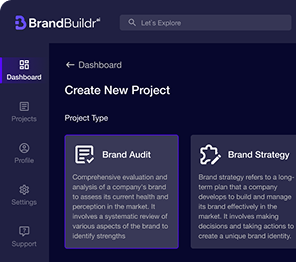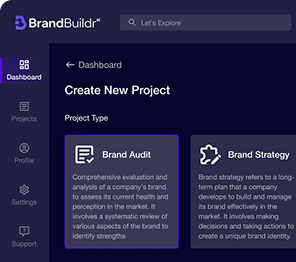Accurately estimating Azure migration cost, ranging from $5,000 for small lift-and-shift projects to over $600,000 for complex enterprise transformations, empowers organizations to budget effectively, optimize ROI, and avoid unforeseen expenses.
Explore our Azure migration services for expert consulting and assessment.
As businesses accelerate their move to the cloud in 2025, understanding Azure migration cost is critical for making informed investment decisions. This comprehensive guide explores the Azure migration pricing models, Azure migration estimation methods, and Azure migration assessment scenarios for organizations of all sizes. You will learn how to evaluate the cost of Azure migration services across SMB, mid-market, and enterprise environments, use built-in calculators and professional assessments, and follow a practical checklist to ensure a smooth migration.
%20(3).png)
Key Cost Drivers of Azure Migration
Migrating workloads to Azure involves more than simply adding up virtual machine rates. Three primary factors drive total Azure migrate cost:
Infrastructure Complexity and Scope
Complex on-premises environments with multiple inter-application dependencies and legacy platforms require deeper analysis and potential re-architecting, increasing Azure migrate costs by up to 50% compared to straightforward lift-and-shift scenarios.
Data Volume and Transfer
Underestimating outbound data by 30–40% leads to unexpected egress charges. Accurately quantifying terabytes of data and selecting the right transfer tools helps control bandwidth and storage fees, crucial in any Azure migration estimation exercise.
Migration Strategy
- Lift-and-Shift: Affordable entry point ($5,000–$20,000) for rehosting VMs with minimal changes.
- Re-Platforming: Moderate complexity ($20,000–$60,000) for small code or configuration updates.
- Re-Architecting: High-effort modernization ($20,000–$100,000+) to leverage cloud-native architectures and scalability.
Each approach carries distinct Azure migration pricing implications. Lift-and-shift minimizes labor costs but may not fully leverage cloud efficiencies, while re-architecting demands higher upfront investment but delivers greater long-term savings.
Azure Pricing and Licensing Models
Azure offers flexible subscription options that dramatically influence the Azure migration cost:
.avif)
Pay-As-You-Go
- No long-term commitment; ideal for dev/test environments.
- Carries the highest unit prices, affecting overall Azure migrate cost estimation for production workloads.
Reserved Instances
- Commit to 1- or 3-year terms for specific VM types.
- Save up to 72% compared to pay-as-you-go, significantly reducing azure migration pricing for steady-state applications.
Azure Hybrid Benefit
- Leverage existing Windows Server or SQL Server licenses with Software Assurance.
- Reduces compute costs by up to 40%, a key factor in the cost of Azure migration services for enterprises with substantial legacy licensing investments.
By combining Azure migrate pricing options, reserved instances and Azure Hybrid Benefit, organizations achieve optimal cost efficiency for predictable workloads.
Cost Breakdown by Organization Size
Small and Medium Businesses (SMB)
Range: $5,000–$40,000
Scenario Highlights:
- 5–20 VMs, 1–5 TB of data.
- Simple lift-and-shift migrations with minimal customization.
- Basic security and compliance setups.
A typical SMB spends $10,000–$25,000 to cover assessment, planning, execution, and basic training. Leveraging free azure migration assessment tools minimizes upfront consultant fees.
Mid-Market Companies
Range: $40,000–$200,000
Scenario Highlights:
.avif)
- 50–200 VMs with multiple application dependencies.
- Partial re-platforming for modernization.
- Integration with existing ERP, CRM, and on-premises databases.
- Enhanced security, governance, and compliance controls.
Mid-market migrations often include professional azure migrate cost estimation services ($5,000–$10,000) to refine resource sizing and forecast ongoing operational expenses accurately.
Enterprise Organizations
Range: $200,000–$600,000+
Scenario Highlights:
- Hundreds of VMs, mission-critical workloads.
- Full re-architecting of legacy systems.
- Zero-downtime migration strategies, multi-region deployments.
- Advanced compliance (HIPAA, PCI DSS, GDPR) frameworks.
- Phased rollout over 12–24 months.
Enterprises allocate significant budgets to cover comprehensive azure migration pricing assessments, custom tooling development, and extensive stakeholder training.

Azure Service-Specific Pricing
Azure Database Migration Service Pricing
- Standard Tier: Free for offline migrations up to 4 vCores.
- Premium Tier: $0.37/hour per vCore for near-zero downtime migrations (first six months free).
Understanding Azure database migration service pricing is crucial when estimating costs for large-scale database transitions.
Azure Migrate: Server Migration
- Free for first 180 days per VM; thereafter $25/month per replicated instance.
This tiered approach significantly influences long-term Azure migrate cost calculations for server-centric migrations.
Storage and Compute Costs
- Archive Tier Storage: $0.00099/GB/month.
- Premium Tier Storage: $0.15/GB/month (first 50 TB).
- Burstable VMs: From $3.80/month.
- High-Performance VMs: Exceed $1,000/month for large configurations.
In-depth Azure migrate cost estimation must factor in storage access patterns and VM sizing to avoid overprovisioning.
Tools for Azure Migration Assessment and Estimation
Built-In Azure Tools
- Azure Pricing Calculator: Customize compute, storage, network, and software costs.
- TCO Calculator: Compare on-premises TCO with Azure over 3–5 years.
- Azure Migrate Assessment: Delivers readiness reports, dependency mapping, and Azure migration cost estimation for different scenarios.
Third-Party Calculators and Plugins
- Cloudamize, Turbonomic, and Cast AI plugins integrate with Azure APIs to refine resource sizing and Azure migration pricing forecasts based on real-time telemetry.
Professional Assessment Services
Consulting engagements ($3,000–$10,000) provide:
- Customized Azure migration assessment reports.
- Risk analysis and mitigation plans.
- Detailed Azure migrate cost breakdowns and ROI projections.
Explore our step-by-step Azure migration strategy guide for actionable details.

Migration Assessment Checklist
Ensuring nothing is overlooked during planning improves both accuracy of azure migration cost estimation and migration success.
Technical Assessment
.avif)
- Infrastructure Inventory: Document VMs, on-prem servers, network topology.
- Dependency Mapping: Identify inter-application connections.
- Performance Baseline: Capture CPU, memory, I/O usage.
- Compatibility Analysis: Flag apps requiring refactoring.
Financial Assessment
- Current TCO Calculation: Hardware, software, maintenance, and personnel costs.
- Cloud Cost Modeling: Use Azure calculators to generate azure migrate pricing scenarios.
- ROI Projections: 3–5 year models including migration and operational costs.
- Budget Planning: Align with finance stakeholders for approvals.
Business Readiness Assessment
- Stakeholder Alignment: Executive sponsorship and project governance.
- Training and Change Management: User training plans and communication strategies.
- Phased Migration Plan: Milestones, rollback plans, and contingency buffers.
- Risk Mitigation: Identify technical, financial, and organizational risks.
Optimizing Costs and Maximizing ROI
Pre-Migration Planning
- Conduct thorough Azure migration assessment to right-size workloads.
- Retire or consolidate obsolete systems to reduce Azure migration cost.
- Leverage reserved instances and Azure Hybrid Benefit.
Post-Migration Management
- Implement auto-scaling policies to adjust resource usage dynamically.
- Use Azure Cost Management to monitor budgets and set alerts.
- Regularly review reserved instance utilization and modify commitments.
Avoiding Hidden Costs
- Monitor data egress volumes to prevent surprise charges.
- Identify and decommission underutilized VMs and orphaned storage.
- Include change management and training in Azure migration cost estimation to avoid productivity dips.
Business Benefits and ROI
Quantified Returns
- 228% ROI over three years for PaaS modernization on Azure.
- 291% ROI for early Azure adopters according to IDC.
- 40% reduction in infrastructure maintenance costs.
- 50% faster time-to-market for application deployments.
These figures underline the strategic value beyond the immediate azure migration cost, showcasing long-term savings and agility gains.
Operational Efficiencies
- Reduced hardware maintenance and upgrade cycles.
- Enhanced security with built-in threat protection and compliance controls.
- Scalable infrastructure aligned with demand surges.
- Accelerated DevOps workflows and continuous delivery pipelines.
Cost Estimation Framework
To simplify Azure migrate cost estimation, use this framework:
Base Migration Cost = Assessment + Planning + Execution + Training
- Assessment & Planning: 10–15% of total project cost
- Tools & Services: 20–30%
- Labor & Consulting: 40–60%
- Training & Change Management: 5–10%
Ongoing Operational Cost = Compute + Storage + Networking + Support
- VM utilization based on SKU and auto-scaling
- Storage tiers matched to access frequency
- Data egress projections for outbound traffic
- Support and maintenance subscriptions
Conclusion and Next Steps
Migrating to Azure in 2025 offers compelling ROI and operational benefits when executed with rigorous Azure migration assessment and precise Azure migration estimation. By understanding your unique Azure migration cost drivers, leveraging built-in and third-party tools, and following a structured checklist, your organization can minimize surprises, optimize spend, and accelerate cloud adoption.
Ready to understand your Azure migration costs? Get a Free Assessment today, complete our form on the landing page for a tailored Azure migration assessment and detailed Azure migration cost breakdown, ensuring your journey to Azure delivers maximum value.
FAQ
What is the average Azure migration cost for small and medium businesses (SMBs)?
For SMBs, the typical Azure migration cost ranges from $5,000 to $40,000. This covers lift-and-shift projects, involving 5–20 virtual machines and straightforward data transfers. Using free Azure migration assessment tools can help SMBs minimize expenses while accurately planning for all project phases.
How is Azure migration pricing determined for enterprises or large organizations?
Azure migration pricing for enterprises depends on project complexity, number of workloads, regulatory needs, and legacy system requirements. Projects involving hundreds of VMs, phased rollouts, and advanced compliance often range from $200,000 to over $600,000. Professional Azure migration assessment and custom Azure migrate cost estimation are crucial for reducing risk and optimizing long-term ROI.
What key factors influence the cost of Azure migration services?
The main components affecting the cost of Azure migration services include infrastructure complexity, application dependencies, data volume, Azure region, chosen migration strategy (lift-and-shift, re-platform, or re-architect), and the scope of post-migration support. Licensing, storage tier selection, and use of reserved instances or Hybrid Benefits also play major roles in total Azure migration cost.
How does Azure database migration service pricing work?
Azure database migration service pricing is typically separated into Standard (free for basic, offline migrations) and Premium (paid, supporting near-zero-downtime migrations at a per-hour rate, with initial free offers for new workloads). The right tier for your project should be matched to downtime sensitivity and workload criticality for accurate azure migrate cost estimation.
What tools are available for Azure migration assessment and cost estimation?
Recommended tools include Azure Migrate (for discovery, assessment, and business case analysis), the Azure Pricing Calculator (for modeling ongoing service costs), and the Azure Total Cost of Ownership (TCO) Calculator for comparing cloud versus on-premises TCO. These resources deliver realistic, scenario-based Azure migration cost and Azure migration estimation. Many professional consultants also offer custom Azure migrate cost estimation for complex requirements.
What ongoing costs should be considered after migration?
Ongoing Azure migrate costs typically include compute (VM), storage (tiered), networking (data egress), management, backup, security, and support. Monitoring and adjusting resources post-migration ensures that operational expenses remain aligned with usage and budget.
Heading 1
Heading 2
Heading 3
Heading 4
Heading 5
Heading 6
Lorem ipsum dolor sit amet, consectetur adipiscing elit, sed do eiusmod tempor incididunt ut labore et dolore magna aliqua. Ut enim ad minim veniam, quis nostrud exercitation ullamco laboris nisi ut aliquip ex ea commodo consequat. Duis aute irure dolor in reprehenderit in voluptate velit esse cillum dolore eu fugiat nulla pariatur.
Block quote
Ordered list
- Item 1
- Item 2
- Item 3
Unordered list
- Item A
- Item B
- Item C
Bold text
Emphasis
Superscript
Subscript


















.avif)

.avif)




.png)


